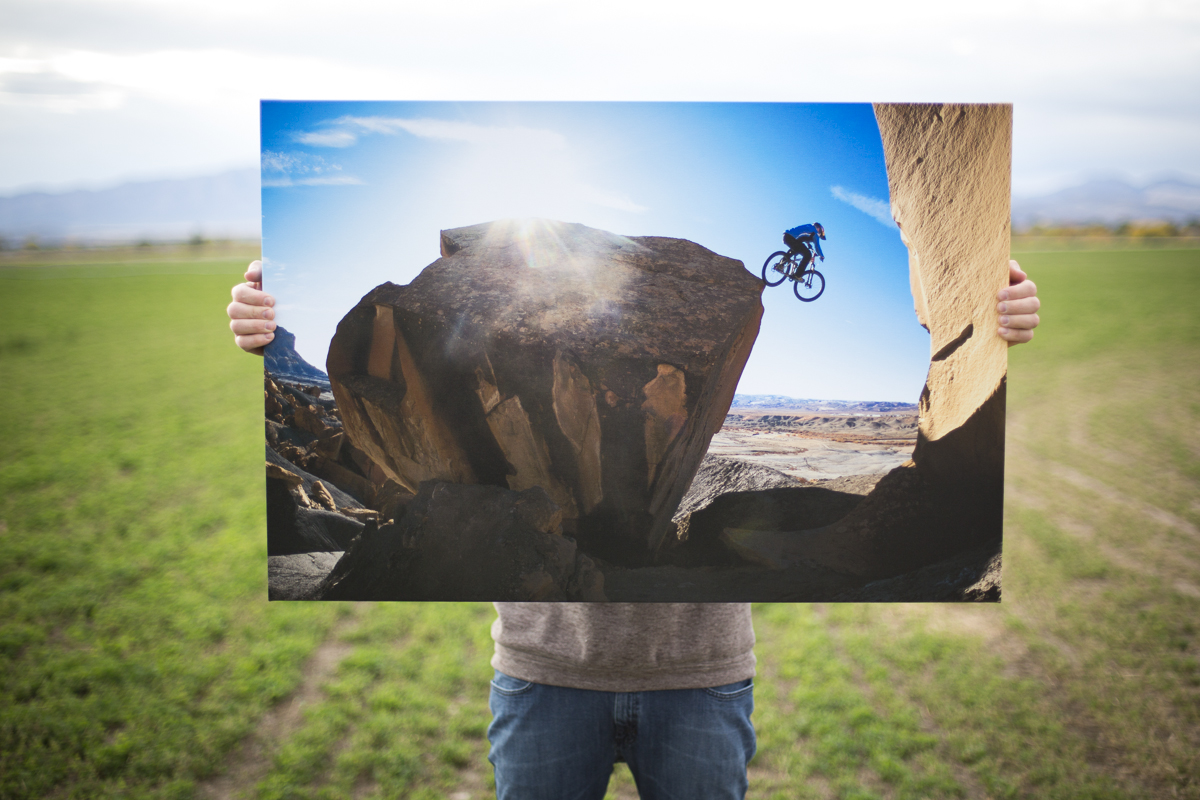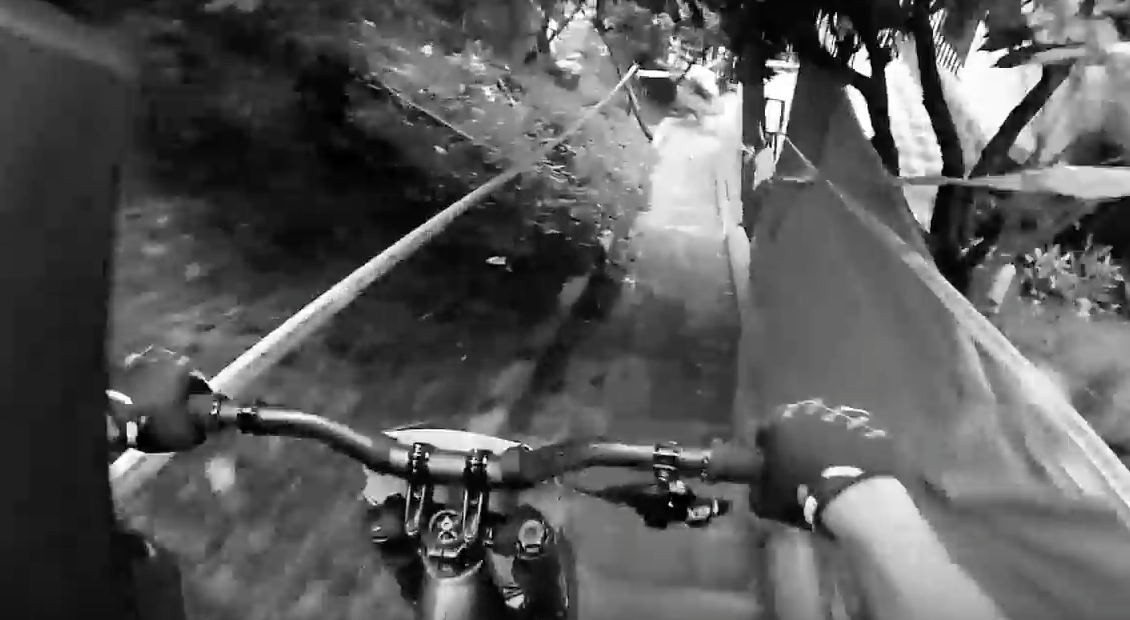[ad3]
Recently we were invited by Formula Brakes to spend a day with them testing their T1 Racing and RO Racing brakes. The idea was to try each set of brakes, go through a set-up procedure and learn about the development process and how that translates to brake feel/performance on the trail. We were then to decide which brake suited our riding preferences and test it long term.
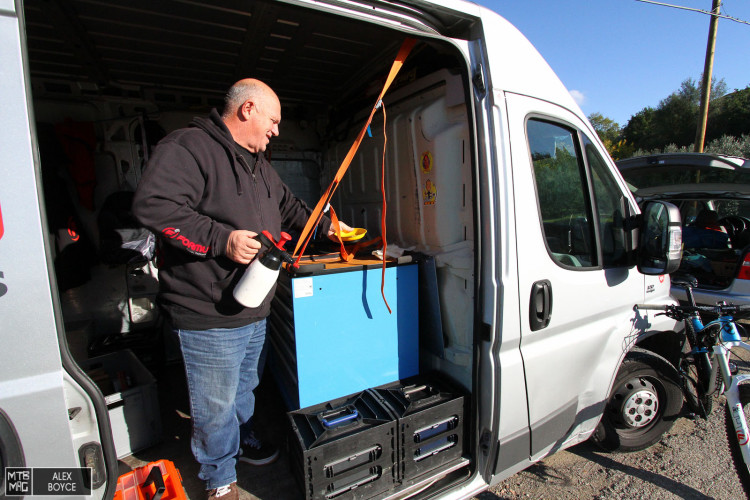
Testing day with Otto – Formula’s World Cup mechanic. There is very little this man doesn’t know about brakes. He opened up the racing rig and delved into its depths to find our components.
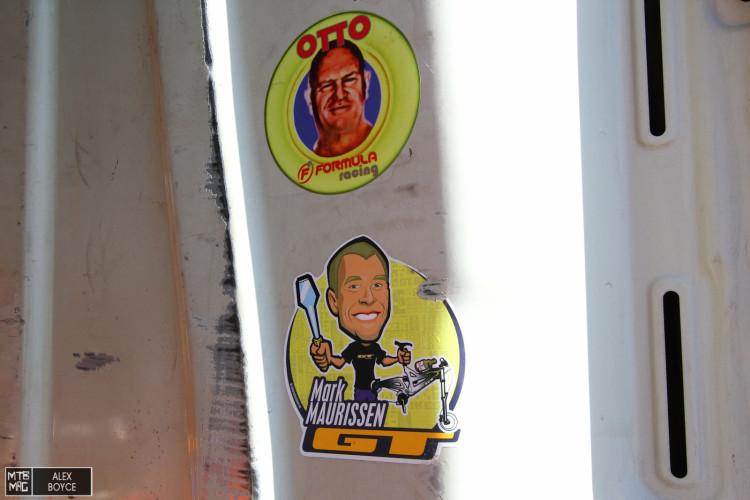
You get your own sticker logo if you have been on the circuit for long enough, in Otto’s case almost 20 years.
Brake Specifications
Formula have arrived at their current MTB brake models through long term, incremental development – our test brakes are the latest updates from that journey. First, we tested the T1 Racing, aimed at All Mountain/Enduro. Performance for weight is their key feature, the caliper has 24mm pistons and is Forumla’s light weight racing brake. The second set we tested was the RO Racing, it is a slightly heavier brake with larger (average 25.4mm) calliper pistons that has more of a leaning towards Enduro and gravity and can be found on some DH bikes at the World Cup.
The T1 Racing and RO Racing both slot in at the top of Formula’s range. The levers are a unique pull piston style and have every possible component treatment made to them with an aim at high performance, including very low friction levers which are a combination of every bearing and surface being engineered. The callipers are one piece forging, meaning they are very stiff. The finish of both brake sets was exceptional and in the hand they felt like high end brakes.

T1 Racing
Forged Radial Pull Style
M/C Body Finish – Anodized Titanium
M/C Clamp Color – Forged Glossy Black
M/C Screws – Titanium
Lever Blade – Forged Aluminum, anodized glossy black
Caliper PM6 – forged one-piece body with 24mm pistons
Caliper Body – Finish Anodized Titanium
Pad Type – Sintered Compound
Hose Length – 100cm front/165cm rear
Tool Free Reach – Adjust – TFRA Not Compatible
Feeling Control – System – FCSCompatible
MixMaster – Compatible
Brake Pads – All Compatible
Rotors All Compatible – 6H and Center Lock
Weight – around 340grams per end.
Price – Discs and brakes €580

RO Racing
Forged Radial Pull Style
M/C Body Finish – Anodized Titanium
M/C Clamp Color – Forged Glossy Black
M/C Screws – Titanium
Lever Blade – Forged Aluminum, anodized glossy black
Caliper PM6 – Forged one-piece body with Oval pistons (Ø25.4mm) equivalent
Caliper Body – Finish Anodized Titanium
Pad Type – Sintered Compound
Hose Lenght – 100cm front/165cm rear
Tool Free Reach – Adjust – TFRA Not Compatible
Feeling Control – System – FCS Compatible
MixMaster – Compatible
Brake Pads – All Compatible
Rotors All Compatible – 6H and Center Lock
Weight – Around 360 per end
Price – Discs and brakes €600
Setup
Otto (Luciano Villano) set to work on our test bike and installed the first set of brakes. We were to try the T1 Racing followed by the RO Racing after a number of descents on the test track. Setup was fairly straight forward with brake hoses being correct for our frame set-up, no hose cutting or bleeding was necessary. As Otto installed the brakes he explained the various features and how they differed. The levers are exactly the same in features and construction. The calipers are different with the RO having a larger oval caliper that has a contact patch over the pad equivalent to a four piston brake. Both brakes use the same pad sizes. We used sintered pads. If conditions were muddy and wet it was recommended that we try the organic pads.
Interestingly the levers require an allen key to adjust reach. This is part of Formula’s philosophy which is to strip all necessary parts off the top level racing brakes and leave riders with just what they need, thus saving weight and removing complication in construction. The clamp bolt is very low profile, it fitted on our bars without having to reposition any components.
The first part of our first run we spent bedding the brakes in. We then continued to use the same pads and discs for the rest of our ride time. We chose to use 180 mm discs, as Formula wanted to impress on us that their brakes are designed to give all the power needed with the smaller discs. 203mm discs should be reserved for DH. This fits with their Enduro fork design, which was also installed which is recommended to be used with 180 mm discs.
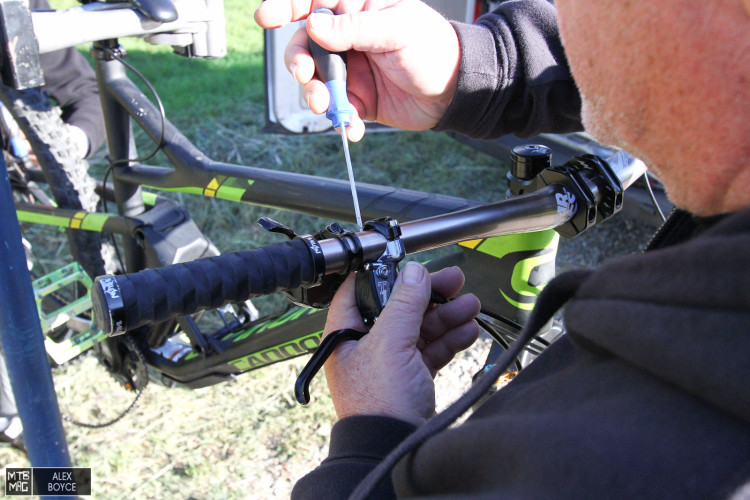
Otto dialing in our brake levers.
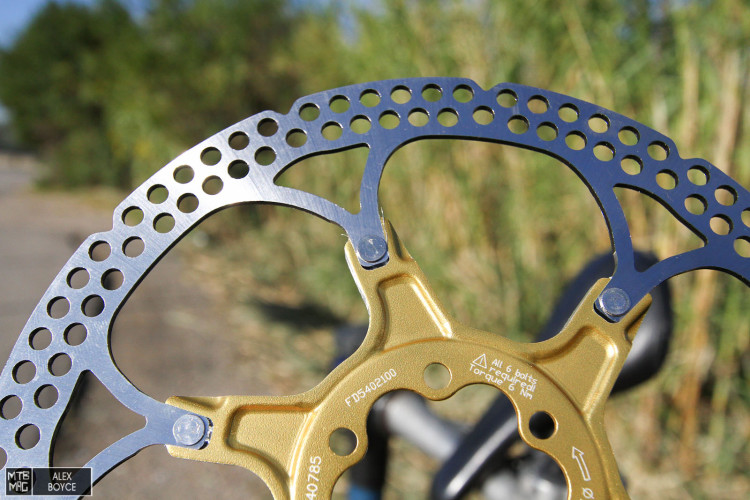
Formula discs are installed, these are two piece discs. The pins do not take the strain of braking forces, they just attach the spider to the brake track and keep it in place. Forces are distributed through the spider and disc interface which is designed to reduces warping of the disc as they heat up.
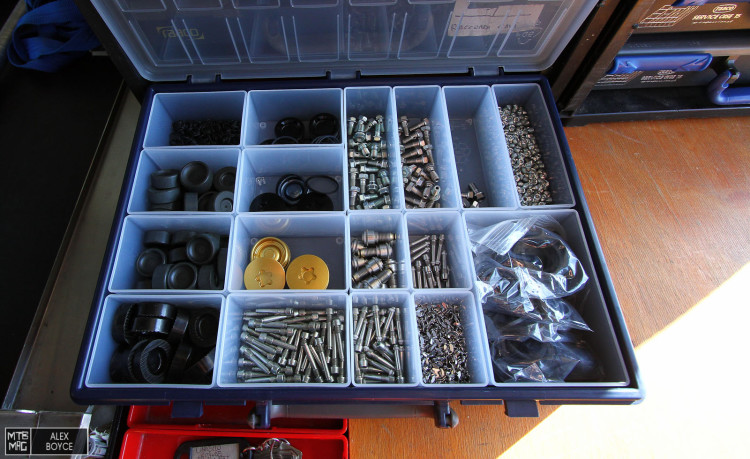
In the meantime we checked out the spare part drawer, nothing missing here.
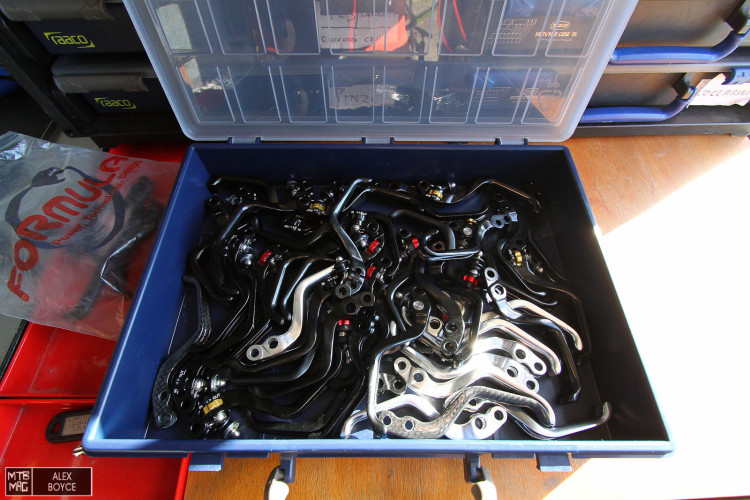
Any crashes were covered with enough spare levers for a small team.
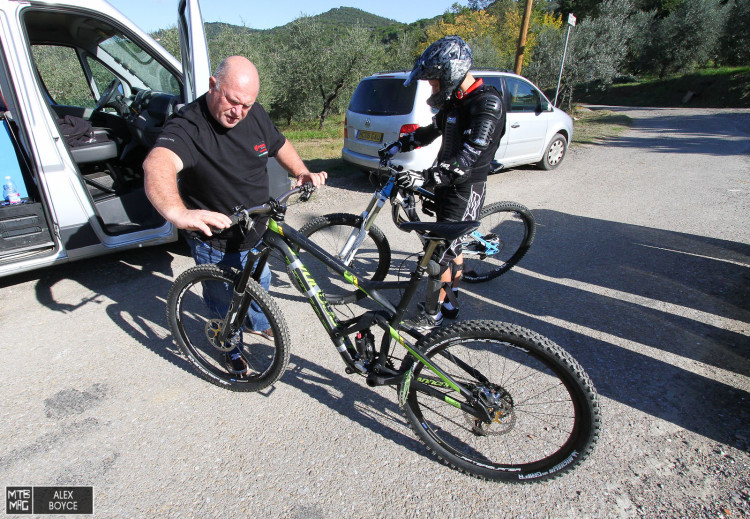
Otto gives a final check, we are ready to ride.
On The Trail
The aim of our comparative trail tests were to select a brake system which we preferred for a long term test. Looking at spec sheets is all well and good but getting a feel in the real world of riding is better. We tested on various trails including at Punta Ala.
Our first test rides were with the T1 Racing brakes. The first feelings were of a smooth brake with plenty of power. Lever adjustment remained constant as we scrubbed the brakes down the trail. Formula use DOT fluid which resists thermal changes very well, we experienced no brake pump. The pads bedded in quickly and had a nice smooth bite to them. The lever feel was progressive and we could lock the brakes without destroying our hands with a iron grip. With each brake we used the same pads and discs when switched over, so as to not need to bed in each brake each time. We did not experience any noise or fade as we hammered down the trail.
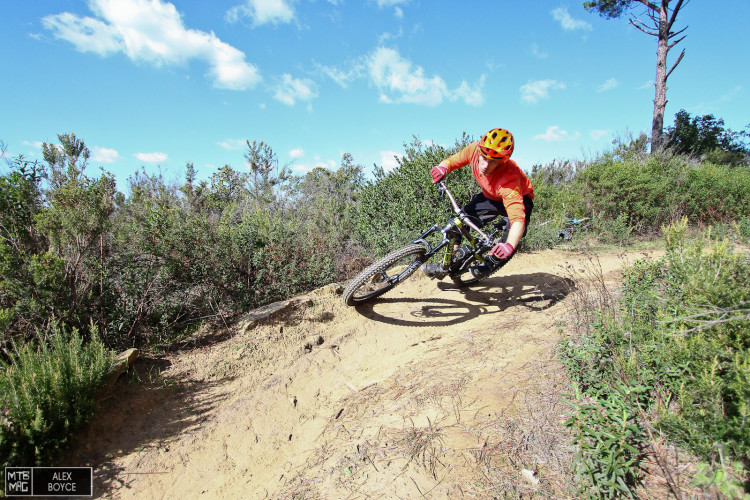
Testing the T1 Racing brakes.
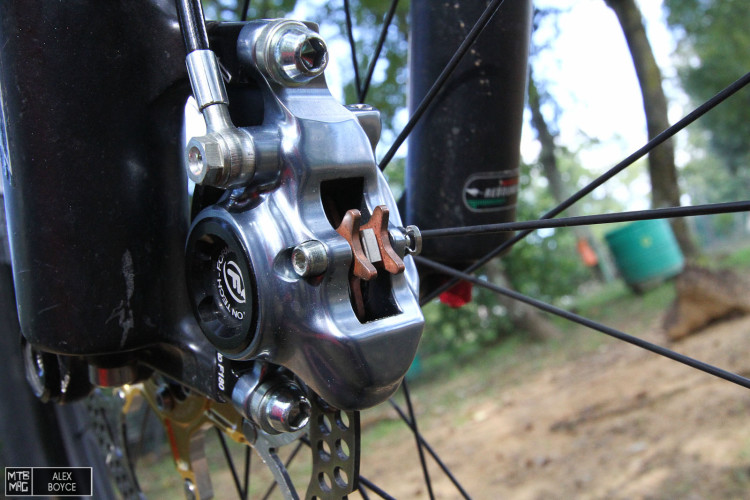
Then we swapped to the RO Racing brakes which have the same lever but a more advanced caliper.
Once we had tried the T1 Racing brakes we switched over to the RO Racing brakes and continued with the same ride. We immediately noticed a difference between brakes and how they performed regarding power. The RO Racing had more power and it was slightly easier to understand the contact point onto the disc, there was a slightly more intuitive feel to the brake. As this was not a long term test we could not evaluate the brakes more than that at this point. You need many hours on a component to really understand how it performs, especially brakes. Our main point was to decide which style of brake we preferred trail or gravity. We started to understand that our 85 kilo rider weight and fairly aggressive style was leaning us towards the RO Racing brakes.
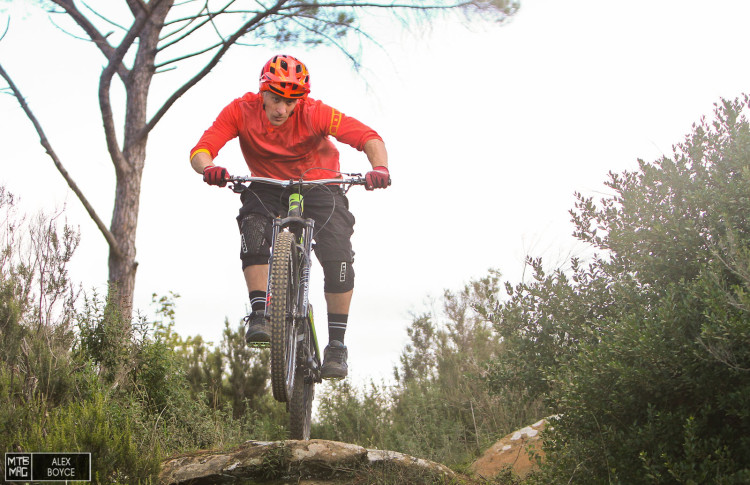
We went back up the trail and tested again with the RO Racing.
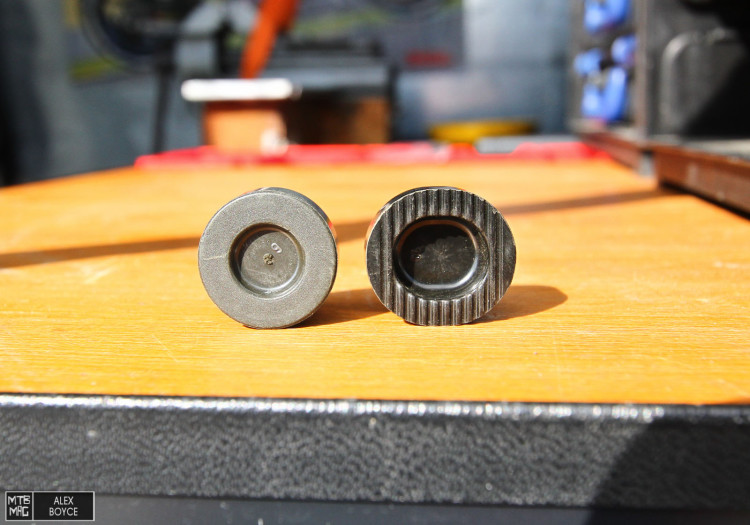
The two brake types are distinct in the caliper area, The RO has an oval more advanced design of piston. The oval design is clear here, the idea is to give the same coverage as a 4 piston calliper.
Our Preference
After our first initial comparative test runs we opted for the RO Racing brakes to be our long term test brake. However there is more to this decision than just pure power. Swapping between the brakes gave us an insight into our own riding style. The T1 Racing brakes are performance brakes, but we noticed that depending how you tend to ride that could influence your brake choice.
Our test rider partner for the day Marco Montiglioni who is also on the Formula development team noted how professional riders on the Enduro world often opt for the T1 Racing brake. One of the reasons is that they brake less/more precisely. Therefore they take a lighter weight solution. For a non professional rider like ourselves, we brake more, we scrub the brakes often in more parts of the trail. A pro rider would not ride this way. We generally spend more time checking our speed for this the RO Racing was a sensible choice, weight was less of a concern for us.
We felt that Marco’s opinion was a fair point, but the RO Racing brake power was a clear advantage for our weight. When riding with the T1 Racing we found ourselves riding more precisely, however we did not check our track times therefore we can’t comment with which brakes we were faster with overall. We probably were more lazy with our style of riding with the RO Racing as we knew we could adjust for our errors on track and throw the bike around more. If we misjudged something we had the option to forgive ourselves by hauling more on the levers. The consequence of this though is probably we were over braking compared to using the T1 Racing brake set. With the T1 Racing we rode more smoothly.
Our aim was to make a personal choice, and having this stark difference in front of us was interesting. Do we go for a brake that makes you ride smoothly? Or a brake that lets you brake a lot, probably at times un-necessarily? It’s clear that the T1 Racing brake is about having only what is needed provided, thus allowing the engineers to save weight and keep those riders that count the grams happy, leaning the T1 Racing more to racing applications.

Later on we took the brakes for a few runs to our Punta Ala testing facility, we kept the same discs and pads for each test run finishing on the beach. RO callipers together are around 40 grams total heavier than the T1.
Summary
Comparing brakes is not something we have done much back to back, especially with a brake companies official brake development rider and mechanic at hand. Normally, we are given a set of brakes and just ride them, rarely switching and comparing directly. The advantage of doing the test rides we did is that we were able to decide which brake suited our riding style better.
Opting for the RO Racing was a reflection of our fairly heavy weight, riding style and general preference for extreme power. Not all riders would concur with our choice. We will freely admit we make mistakes on the trail and that we felt the extra braking power a gravity leaning brake has, helped smooth our errors. If we were riding cross country trails more, or were a less aggressive rider then the T1 Racing starts to look like a perfect solution. With all modern bikes, weight savings across a bike are made with marginal gains across all components not just one component, the T1 Racing is about power and weight performance.
Our aim now is to test the RO Racing over the long term and come back with a test to how they performed in all types of riding conditions as we were only able to try the brakes in dry perfect conditions. We have to try in more extreme conditions and make judgements over a more complete working life of a brake.
Test Centre: Punta Ala Trail Center
[ad45]


